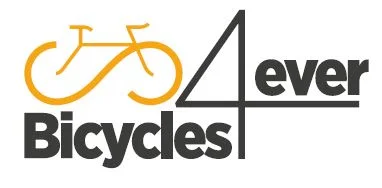Is Narrow Actually Faster? | NorCal Cycling
Source: NorCal Cycling Youtube Channel: Is Narrow Actually Faster?
Video Is Narrow Actually Faster? with NorCal Cycling
Video Is Narrow Actually Faster? with NorCal Cycling YouTube Channel.
Is Narrow Actually Faster?
NorCal Cycling: Does Handlebar Width Really Matter?
Introduction
When it comes to road cycling, every detail matters. From the type of tires to the frame material, cyclists are constantly looking for ways to improve their performance. One specific area that has gained attention in recent years is handlebar width. Traditional 42 CM handlebars have been the standard for many years, but with the changing trends in cycling, narrower 37 CM bars have become popular. The question on every cyclist’s mind is, does handlebar width really matter? NorCal Cycling aims to answer this question through a series of tests and performance analysis.
Setting the Stage for Testing
In a recent video, NorCal Cycling showcased an experiment using two completely identical bikes, the only difference being the handlebar width. The rider, equipped with last year’s 42 CM handlebar bike and this year’s 37 CM handlebar bike, set out to determine if the narrower handlebars would result in a significant performance improvement. By isolating the variable of handlebar width, NorCal Cycling was able to provide an in-depth analysis of how this specific change affected the performance of the rider.
Testing Methodology and Results
On a 5.4-mile loop with 430 ft of elevation change, the rider first completed the test with the traditional 42 CM handlebars, maintaining a constant 300 watts. The result was a completion time of 14 minutes and 49 seconds, equivalent to a speed of 22 mph. The same course was then repeated using the newer 37 CM handlebars at the same power output. Surprisingly, the rider completed the course in 14 minutes and 45 seconds, achieving a slightly higher speed of 22.1 mph.
Upon analyzing the results, it became evident that the narrower handlebars only provided a marginal performance improvement of 4 seconds over the course of 15 minutes. This finding, while unexpected, raised the question of whether the benefits of narrower handlebars extend beyond mere speed improvements.
The Role of Handlebar Width in Performance
While the experiment revealed a minimal impact of handlebar width on overall speed, NorCal Cycling delved into the additional benefits of using narrower handlebars. One of the key advantages highlighted was the rider’s ability to assume a more aggressive aerodynamic position with the 37 CM handlebars. This position, while not sustainable for long periods, is critical in scenarios such as solo bridging to a breakaway, final kilometer sprints, and crit racing. The ability to get narrow on the front end with greater ease provided a significant advantage in certain race scenarios, despite the negligible difference in overall speed.
Furthermore, the unique design of the 37 CM handlebars, which features flared drops, allows for a wider sprinting position while maintaining a narrow grip in the hoods. This blend of narrow and wide hand positions offers enhanced control and torque during sprints, making the handlebars versatile in different racing situations.
The Takeaway for Cyclists
In conclusion, while the performance benefits of narrower handlebars may not be as substantial as initially anticipated, their impact remains significant in specific race scenarios. NorCal Cycling’s test results shed light on the nuanced relationship between handlebar width and performance, emphasizing the importance of understanding the context in which equipment changes can make a difference.
The experiment also highlighted the prevalence of marginal gains in cycling, reinforcing the idea that significant performance improvements often stem from smaller, more targeted changes. Whether it involves optimizing wheels, tires, or handlebars, cyclists should approach equipment upgrades with a discerning eye, considering the specific benefits within the context of their racing style and goals.
Moving forward, NorCal Cycling invites its audience to share their thoughts and suggestions for future testing. By engaging with the cycling community, NorCal Cycling aims to continue exploring various equipment and performance factors, offering valuable insights to cyclists of all levels.
Conclusion
In the world of cycling, every detail matters. NorCal Cycling’s recent experiment on handlebar width emphasized the nuanced relationship between equipment changes and performance. While narrower handlebars may not drastically improve overall speed, their impact in specific race scenarios provides a valuable edge for competitive cyclists. As the cycling community continues to seek ways to optimize performance, NorCal Cycling remains dedicated to providing thoughtful analysis and practical insights to help cyclists make informed decisions for their racing endeavors. Thank you for joining NorCal Cycling on this journey of discovery, and stay tuned for more engaging content.
The opinions expressed in this space are the sole responsibility of the YouTube Channel NorCal Cycling and do not necessarily represent the views of CicloNews.

